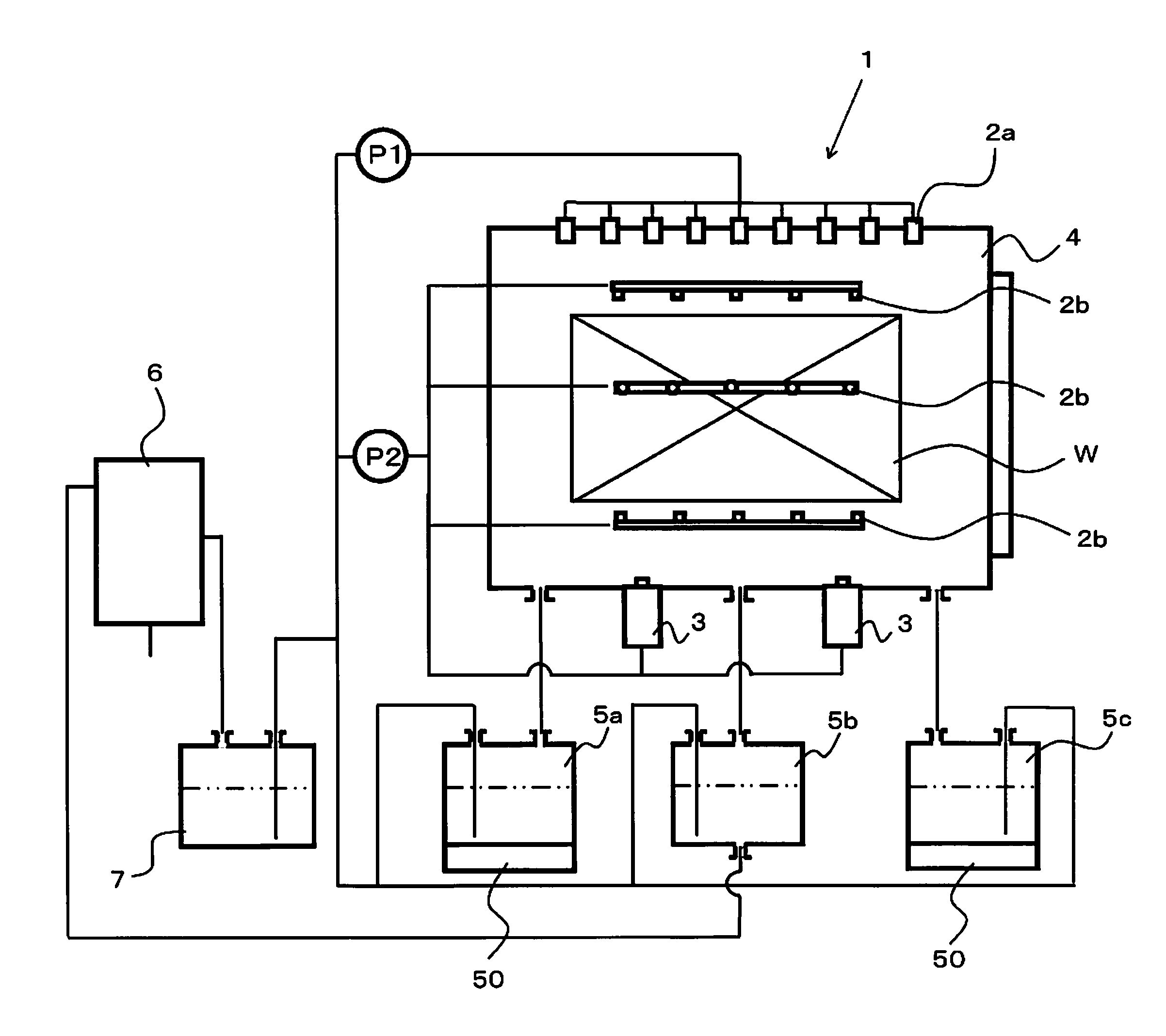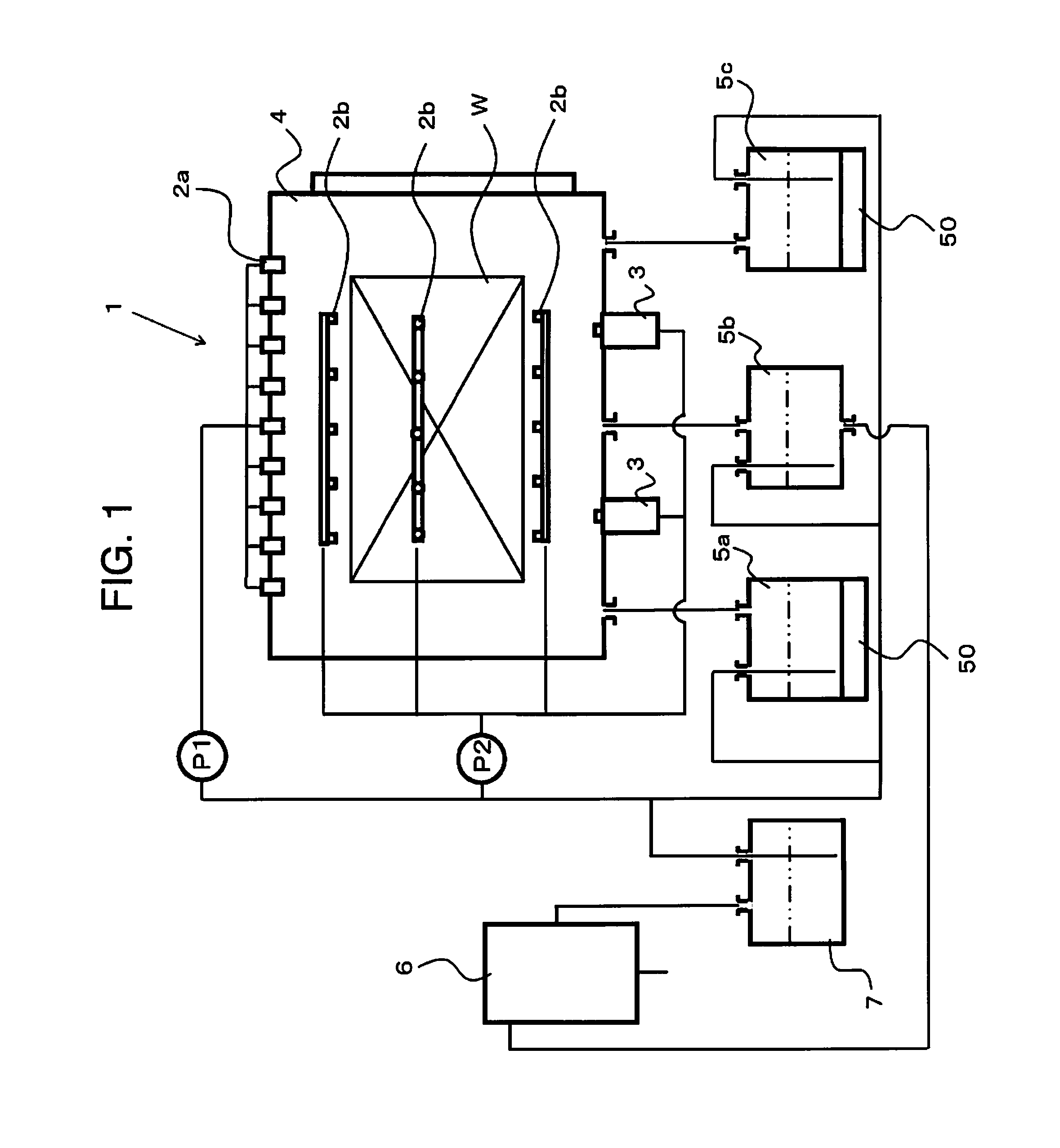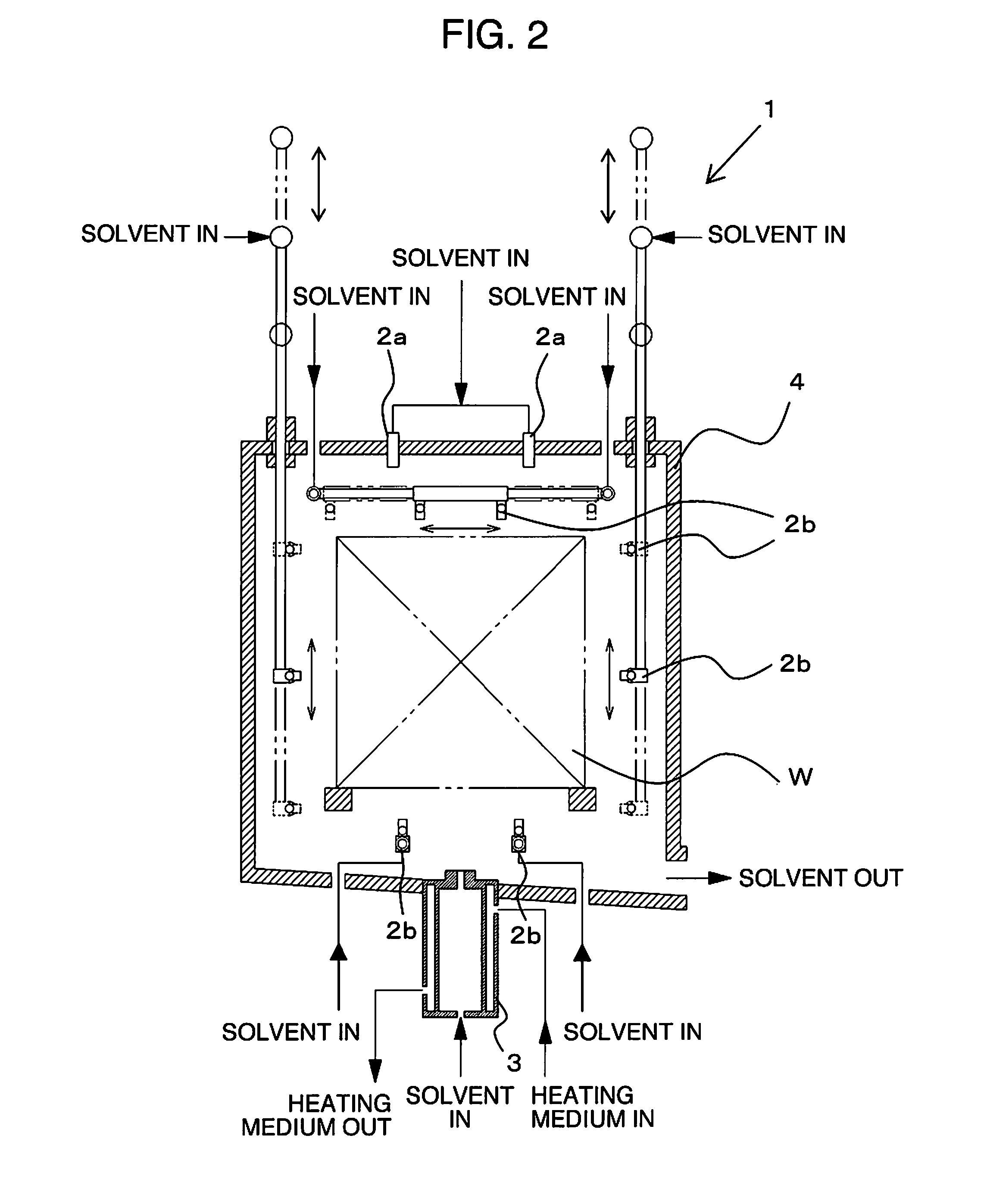Vacuum degreasing and cleaning apparatus and vacuum degreasing and cleaning method
a vacuum cleaner and vacuum cleaner technology, applied in the direction of cleaning processes and utensils, cleaning using liquids, chemistry apparatus and processes, etc., can solve the problems of difficult uniform cleaning, inability to exclude adherents, complex loading process etc., to achieve enhanced cleaning effect of objects to be cleaned, shorten cleaning time, and enhance the effect of removal of contamination
- Summary
- Abstract
- Description
- Claims
- Application Information
AI Technical Summary
Benefits of technology
Problems solved by technology
Method used
Image
Examples
example
[0067]Since a cleaning test for four kinds of specimens (the objects W to be cleaned) which differ in shapes and loading modes from one another was performed by using the vacuum degreasing and cleaning apparatus 1 of FIG. 1 which is shown in the embodiment of the present invention, the test result will be described by using FIG. 11 to FIG. 14. FIG. 11 is a schematic view of the work shapes and the loading mode of a specimen A which was used in the cleaning test of the present example. FIG. 12 is a schematic view of the work shapes and the loading mode of a specimen B which was used in the same test. FIG. 13 is a schematic view of the work shapes and the loading mode of a specimen C which was used in the same test. FIG. 14 is a schematic view of the work shapes and the loading mode of a specimen D which was used in the same test. In regard to the cleaning result, degreasing, drying, and presence / absence of remaining particulate contaminants were visually evaluated.
[0068]The specimens...
PUM
 Login to View More
Login to View More Abstract
Description
Claims
Application Information
 Login to View More
Login to View More - R&D
- Intellectual Property
- Life Sciences
- Materials
- Tech Scout
- Unparalleled Data Quality
- Higher Quality Content
- 60% Fewer Hallucinations
Browse by: Latest US Patents, China's latest patents, Technical Efficacy Thesaurus, Application Domain, Technology Topic, Popular Technical Reports.
© 2025 PatSnap. All rights reserved.Legal|Privacy policy|Modern Slavery Act Transparency Statement|Sitemap|About US| Contact US: help@patsnap.com



